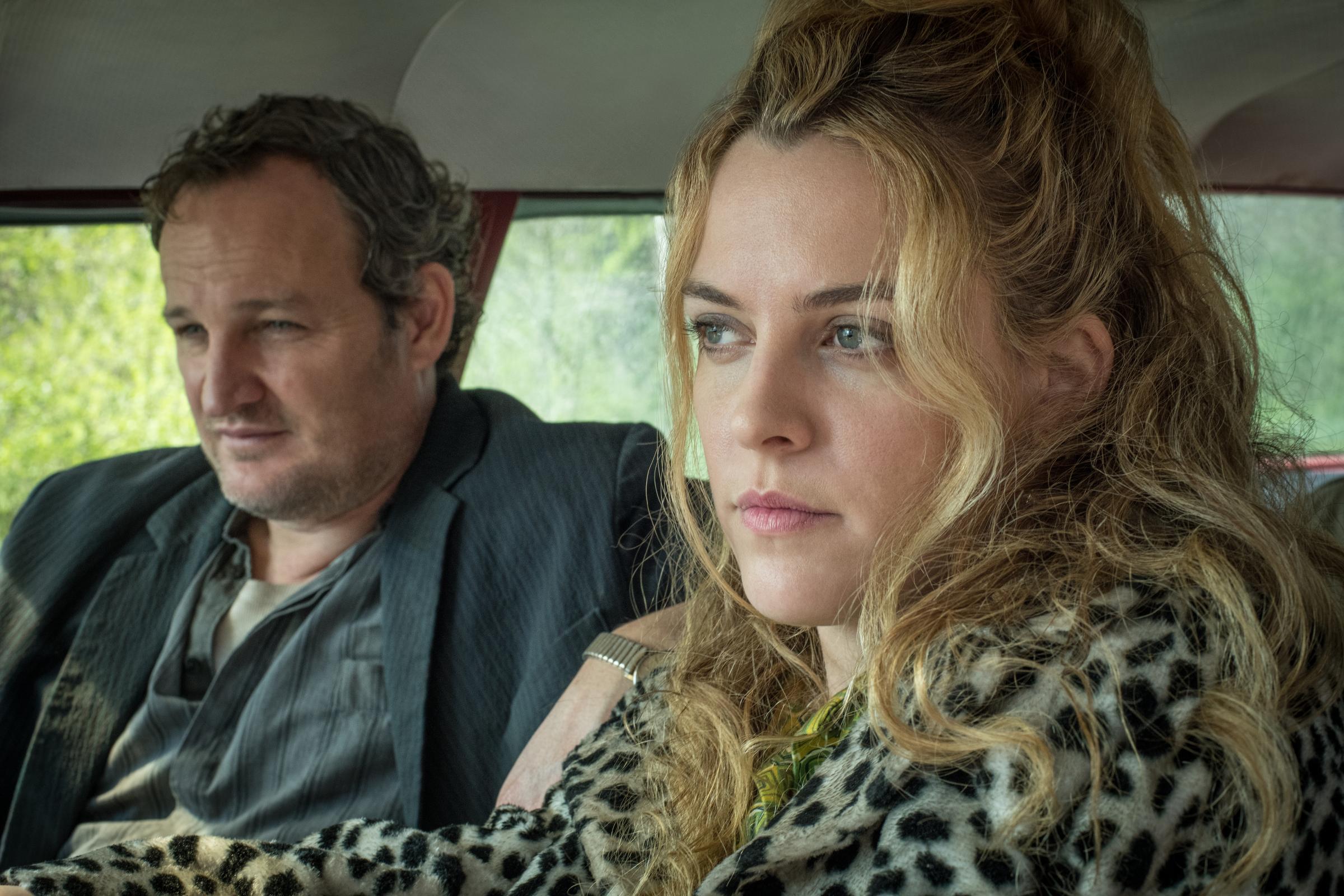There are some movies where you just know the dog is a goner. In Netflix’s The Devil All the Time, directed by Antonio Campos and adapted from Donald Ray Pollock’s 2011 novel, a tortured World War II veteran and mild religious fanatic making a hardscrabble living in Knockemstiff, Ohio, circa 1957, becomes distraught when he learns his wife is dying from cancer. His son has a dog he loves, Jack, who does all the right family-dog things: he barks when there’s trouble, and he attempts to sleep on forbidden soft surfaces, but mostly he just trots with big country-dog energy at his young master’s heels. In stories like The Devil All the Time—which seek to remind us, repeatedly, that evil is everywhere in the world, ferried through every community by willing human hosts—a dog like Jack doesn’t stand a chance. He’s the sacrifice necessary to force the story into its dramatic pretzel shape.
Animal death in movies can be handled well or it can be a cheap way to build tension, and The Devil All the Time is so unsubtle about its aims that from the first sight of those floppy ears, you know you’d better steel yourself (though, to his credit, Campos never goes in for gratuitous, heart-tugging closeups). The story takes place in two towns linked by bad people doing bad stuff, as well as by decent people just suffering through life until death releases them: Bill Skarsgård plays Willard Russell, that troubled vet, who’s originally a denizen of Coal Creek, West Virginia, but who, after the war, makes a new life in Knockemstiff with his cherubic bride, Charlotte (Haley Bennett). Their son, Arvin—played by Michael Banks Repeta as a child and by Tom Holland as a young adult—is a normal kid who loves candy bars and comic books, as well as his dog, but you can bet that The Devil All the Time has no use for your typical idyllic view of the 1950s.

Arvin is a good kid in a dark and murky world, and his story unspools amid a sticky web of misbehavior spun by many, many unsavory individuals, including a camera-wielding creepo (Jason Clarke), an ambitious town sheriff (Sebastian Stan) and, most notably, a sleazy preacher with a taste for nubile flesh (Robert Pattinson). A few innocents, or at least semi-innocents, also populate the story, little dots of light just waiting to be extinguished: there’s the drab town sweetpea, played by Mia Wasikowska, and Riley Keough shows up as a saucy waitress who falls victim to a particularly toxic brand of masculinity.
But mostly, The Devil All the Time is just a pileup of awful people doing terrible things, for no reason other than to prove how wretched humans can be. The template is pure Southern Gothic, but without the subtlety of top-drawer practitioners of the genre, like Flannery O’Connor and William Faulkner. The movie’s grislier elements include a neck stabbing, a few bloody beatings, and an image of a crucified, mutilated, 98 percent dead soldier. But Campos—whose credits include the 2016 film Christine, about Florida newscaster Christine Chubbuck, who committed suicide on live television—doesn’t lend any meaning or weight to these events; they just give off a lurid, sweaty odor. He also tries to pull off the now-classic trick, favored by David Lynch and Quentin Tarantino, of using seemingly innocent vintage pop songs—Jackie DeShannon’s “Needles and Pins,” Sonny James’ “Young Love”—as a backdrop for grim violence. Just when you think he’s used the device for the last time, it comes chugging through again, as understated as a freight train rolling round the bend.

Nothing in The Devil All the Time resonates. It’s hard to care about the decent characters because they’re so boring, and it’s impossible to care about the bad ones because they exist only to teach us a lesson about the unreliability of mankind. Among a cast of reliably fine actors, Holland and Keough are the only two who bring any real emotional shading to their roles. Pattinson, who’s generally as terrific a young performer as we’ve got, just smirks through the movie like a salacious slug—instead of throwing off energy, he leaves a slimy trail. The major point of The Devil All the Time is driven home very early on, and reinforced continually by its visual palette of drab grays, greens and browns. Watching it is like spending two hours and change on a hard church pew, with nothing to show but a few splinters. Deliver us from evil—please.
More Must-Reads from TIME
- Why Trump’s Message Worked on Latino Men
- What Trump’s Win Could Mean for Housing
- The 100 Must-Read Books of 2024
- Sleep Doctors Share the 1 Tip That’s Changed Their Lives
- Column: Let’s Bring Back Romance
- What It’s Like to Have Long COVID As a Kid
- FX’s Say Nothing Is the Must-Watch Political Thriller of 2024
- Merle Bombardieri Is Helping People Make the Baby Decision
Contact us at letters@time.com